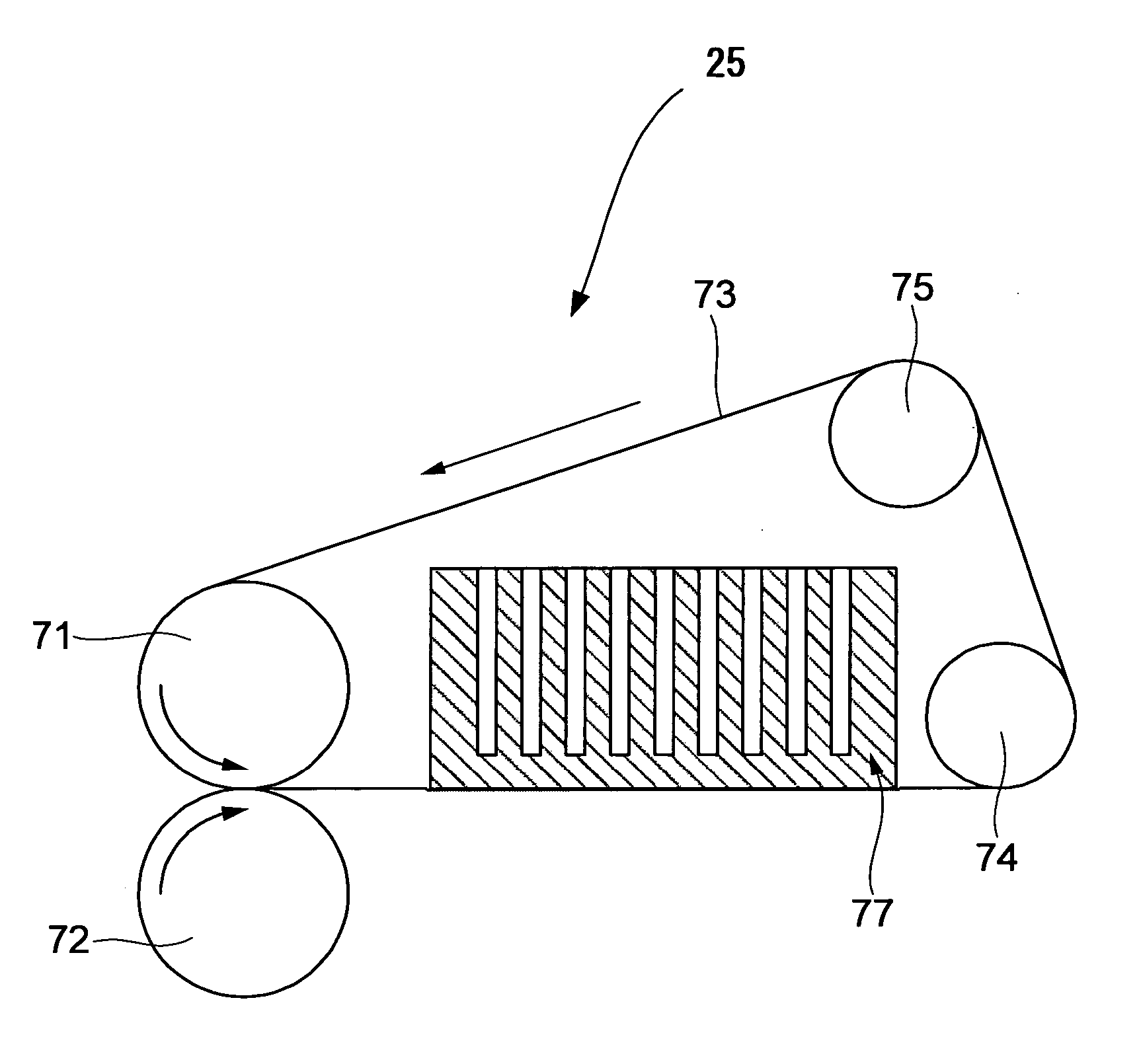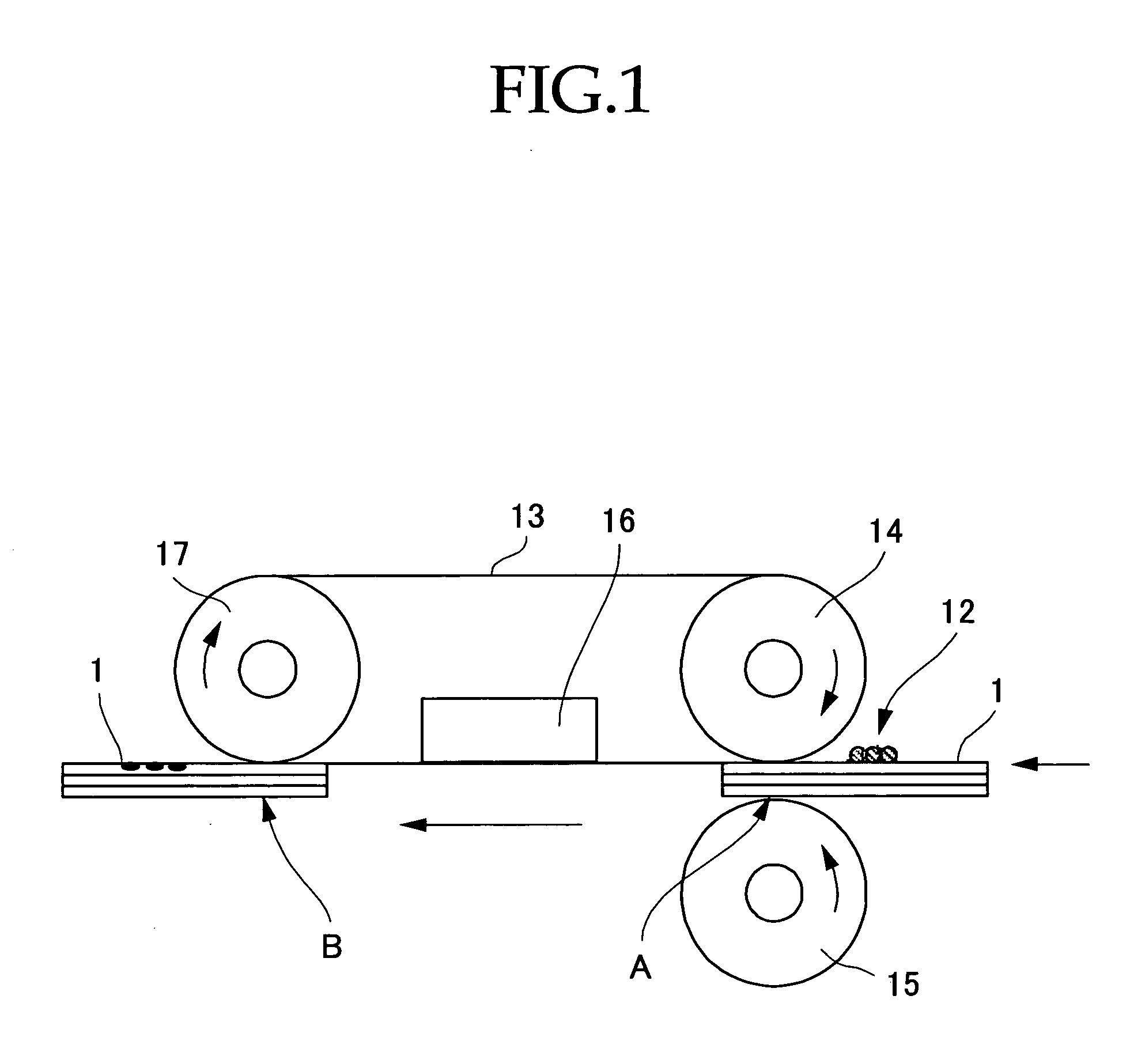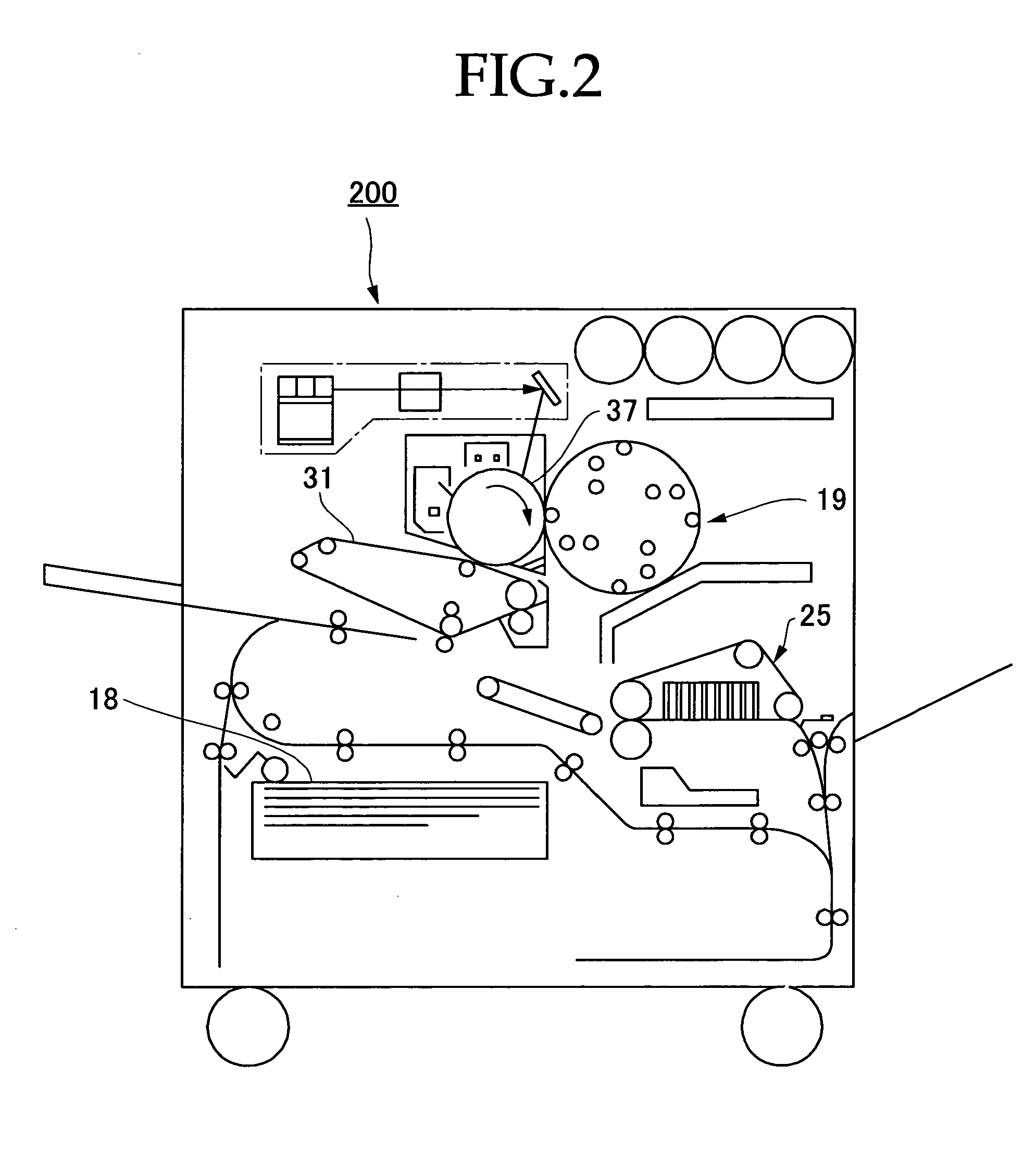Electrophotographic image-receiving sheet and image-forming method using the same
a technology of electrophotography and image-receiving sheets, which is applied in the field can solve the problems of adversely affecting the handling of electrophotographic image-receiving sheets, cracking on the surface of toner images, etc., and achieves the effect of simple treatment and high quality image similarity
- Summary
- Abstract
- Description
- Claims
- Application Information
AI Technical Summary
Benefits of technology
Problems solved by technology
Method used
Image
Examples
example 1
[0312] The following components were mixed in order to prepare a coating liquid for the undercoat layer. The front surface of the support was coated with the prepared coating liquid using a bar coater so that the amount of dried coated resin was 10 g / m2 or the thickness was 15 μm. Then, the undercoat layer was dried at 90° C. for 5 minutes.
[0313]
Urethane resin aqueous dispersion: Takelac250parts by massW60201*)Hollow particle aqueous dispersion2*)566parts by massPolyethyleneoxide: Alcox R10003*)4parts by massAnionic surfactant: Rapisol A904*)1.6parts by massWater94.4parts by mass
1*)by Mitsui Takeda Chemicals, Inc.
2*)Lowpaque HP1055 (by Zeon Corporation, void rate of 55% by volume, volume-average particle diameter of 1 μm)
3*)by Meisei Chemicals Co.
4*)by Nippon Oil & Fats Co., Ltd.
[0314] A coating liquid for the toner image-receiving layer was prepared by blending the following components. The surface of the undercoat layer was coated with the prepared coating liquid for the tone...
example 2
[0316] An electrophotographic image-receiving sheet was produced in the same way as Example 1, except that Lowpaque HP433J (by Zeon Corporation, void rate of 33% by volume, volume-average particle diameter of 0.5 μm) was used as the hollow particle aqueous dispersion for the coating liquid for the undercoat layer.
example 3
[0317] The electrophotographic image-receiving sheet was produced in the same way as Example 1, except that SX866 (by JSR Corporation, void rate of 33% by volume, volume-average particle diameter of 0.5 μm) was used as the hollow particle aqueous dispersion for the coating liquid for the undercoat layer, and the acrylic resins of XE240 (by Seiko Polymer Corporation) and RDX7325 (by Johnson Polymer Corporation) which were mixed in mass ratio of 5 to 5.
PUM
| Property | Measurement | Unit |
|---|---|---|
| Temperature | aaaaa | aaaaa |
| Temperature | aaaaa | aaaaa |
| Percent by volume | aaaaa | aaaaa |
Abstract
Description
Claims
Application Information
 Login to View More
Login to View More - R&D
- Intellectual Property
- Life Sciences
- Materials
- Tech Scout
- Unparalleled Data Quality
- Higher Quality Content
- 60% Fewer Hallucinations
Browse by: Latest US Patents, China's latest patents, Technical Efficacy Thesaurus, Application Domain, Technology Topic, Popular Technical Reports.
© 2025 PatSnap. All rights reserved.Legal|Privacy policy|Modern Slavery Act Transparency Statement|Sitemap|About US| Contact US: help@patsnap.com



